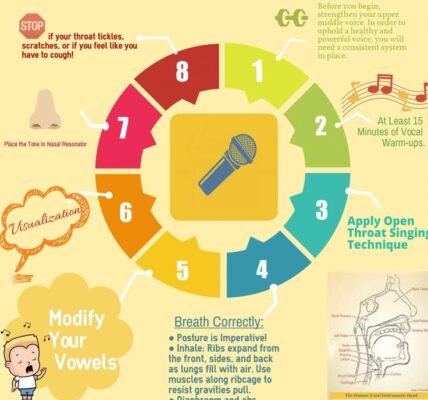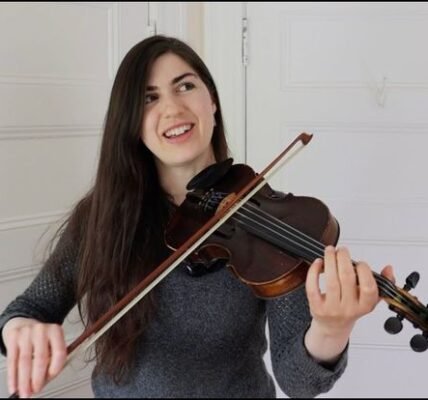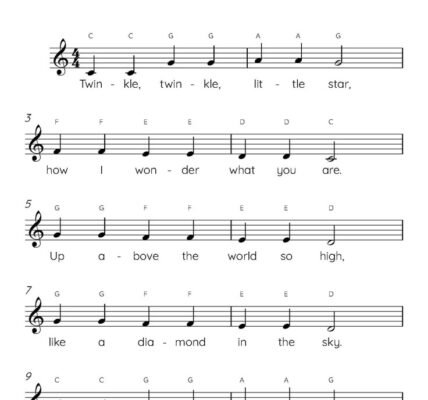Effective warm-up exercises are crucial for violin and fiddle players to prepare their hands, arms, and minds for playing. Warm-ups enhance flexibility, develop bow control, strengthen fingers, and improve intonation, setting the foundation for productive practice and performance sessions. Whether you’re a beginner or a seasoned player, incorporating these carefully designed warm-ups into your routine can significantly enhance your skills.
Why Warm-Ups Are Non-Negotiable
Before jumping into complex pieces or improvisations, warm-ups are essential for several key reasons:
- Preventing Injury: String playing involves intense, repetitive motions. Warming up reduces the risk of strain on muscles and tendons.
- Enhancing Dexterity: Targeted exercises prepare fingers for fluid and precise movement on the fingerboard.
- Improving Tone and Intonation: Physical readiness leads to better sound quality and pitch accuracy.
- Building Mental Focus: Structured warm-ups help players transition into a focused state, ready to tackle challenging music.
Now, let’s go through some warm-up practices designed for violin and fiddle players.
1. Loosening and Stretching Exercises
Start with physical stretches to release tension and increase flexibility before picking up your instrument.
Arm and Wrist Rotations
- Rotate your wrists slowly in both directions for 30 seconds each to loosen up tendons.
- Follow with gentle arm circles to warm up shoulder joints.
Finger Stretches
- Place one hand on a flat surface, keeping the fingers spread.
- Gently pull each finger back with your other hand, holding for 10–15 seconds per finger.
- Roll your fingers into a loose fist and extend them outward several times to increase blood flow.
These exercises are particularly useful after long periods of inactivity, such as before a morning practice session.
2. Open String Bowing
Once you’ve completed your physical stretches, begin warming up with open strings.
Long, Even Strokes
- Play slow, full-length bow strokes on each open string (G, D, A, E).
- Focus on producing an even tone by applying consistent bow pressure and maintaining speed.
Controlled Dynamics
- Vary the volume of your bow strokes from pianissimo (very soft) to fortissimo (very loud) and back.
- Listen carefully to ensure dynamic changes are smooth and precise.
This exercise strengthens your bow arm control and helps achieve a clear tone.
3. Scales and Arpeggios
Scales and arpeggios are fundamental warm-ups for pitch accuracy and finger coordination.
Slow Scales with a Metronome
- Start with a simple scale in a comfortable key, such as G major or D major.
- Practice slowly, ensuring each note is in tune and your fingers land firmly on the fingerboard. Use a metronome to maintain consistent timing.
Arpeggio Patterns
- Play arpeggios in three and four-note patterns, listening for smooth string transitions.
- Focus on finger placement and bow articulation to refine each note.
For advanced players, integrating double stops (two notes played simultaneously) into scales and arpeggios can further enhance tone production and intonation.
4. Left-Hand Finger Strengthening
Strengthening your fingers ensures better control and stamina, especially for complex passages.
Finger Tapping
- Without using the bow, tap your fingers rhythmically on the fingerboard as if playing notes.
- Start with individual fingers, then progress to finger combinations (e.g., 1–2, 2–3) to improve coordination.
Finger Lifts
- Place all four fingers on one string. Lift each finger individually while keeping the others down, then replace it.
- Repeat this on each string to enhance finger independence and dexterity.
These drills are essential for developing speed and agility in both violin and fiddle playing.
5. String Crossing Drills
Efficient string crossing is vital for smooth and fluid transitions between strings.
Open String Crossings
- Practice alternating between strings (e.g., G and D) using small, controlled bow movements.
- Gradually speed up while maintaining a clean sound.
String Crossing with Scales
- Incorporate string crossings into your scale warm-ups by jumping between non-adjacent strings, such as G to A or D to E.
- This technique improves bow-hand precision and coordination.
String crossing exercises are great for players working on fast-paced or complex melodies.
6. Bowing Articulation and Patterns
Mastering various bowing styles expands your expressive capability and builds technical proficiency.
Spiccato Practice
- Practice bouncing your bow lightly off the strings for a spiccato stroke.
- Start on open strings before applying the technique to simple scales.
Bowing Variations
- Experiment with short-stroke and long-stroke patterns, such as staccato (short and detached) or legato (smooth and connected).
- Incorporate advanced bowing exercises like ricochet (bouncing consecutive notes) for added finesse.
These exercises are particularly useful for developing control in fast fiddle styles or expressive violin passages.
7. Intonation Training
Accurate intonation is the hallmark of exceptional players. Training your ear and fingers is vital for this skill.
Drone Practice
- Use an electronic drone or tuning device that plays a sustained pitch.
- Practice matching each note of a scale to the drone, ensuring your intonation is precise.
Harmonic Overtones
- Play natural harmonics (e.g., lightly touching the string at specific points).
- Practice transitioning between regular notes and harmonics to fine-tune pitch sensitivity.
These drills are essential for players looking to refine the accuracy of their finger placements.
8. Vibrato Warm-Ups
Vibrato is a key expressive technique that benefits from specific warm-up routines.
Rolling Exercises
- Place one finger on the fingerboard and practice rolling it back and forth to mimic vibrato movement.
- Focus on keeping the motion smooth and controlled.
Scale Vibrato
- Practice applying vibrato on scales, starting with a slow vibrato motion and gradually increasing speed.
- Alternate between fingers to ensure consistent vibrato across all notes.
Developing a relaxed vibrato technique adds depth and expression to your playing.
9. Rhythm and Timing Exercises
Strengthening rhythm and timing is vital for synchronized group playing or solo performances.
Metronome Practice
- Play scales, arpeggios, or simple tunes along with a metronome, starting with a slow tempo.
- Experiment with various rhythmic patterns, such as triplets or syncopated beats, to enhance versatility.
Clapping Rhythms
- Clap out challenging rhythms before playing them on your instrument. This tactile exercise improves your internal sense of timing.
Consistently practicing rhythm will build confidence, whether you’re playing classical or fiddling styles.
10. Cool-Down Stretches
After your warm-up and practice session, end with cool-down stretches to release tension and prevent stiffness.
- Shake out your fingers, wrists, and arms.
- Gently stretch your shoulders and neck, paying attention to any areas of tightness.
This post-practice routine ensures your muscles remain relaxed and ready for your next session.
Final Thoughts
Warm-up exercises are the foundation of any successful violin or fiddle player’s routine. By focusing on techniques like bow control, scales, finger strengthening, and intonation, you equip yourself with the skills necessary for consistent improvement. Incorporate these exercises into your daily practice, and over time, you’ll notice greater precision, speed, and confidence in your playing.
Now it’s your turn—pick up your instrument, implement these exercises, and enjoy the rewards of disciplined warm-ups. Whether preparing for a casual jam or a professional performance, these routines set you up for success.





